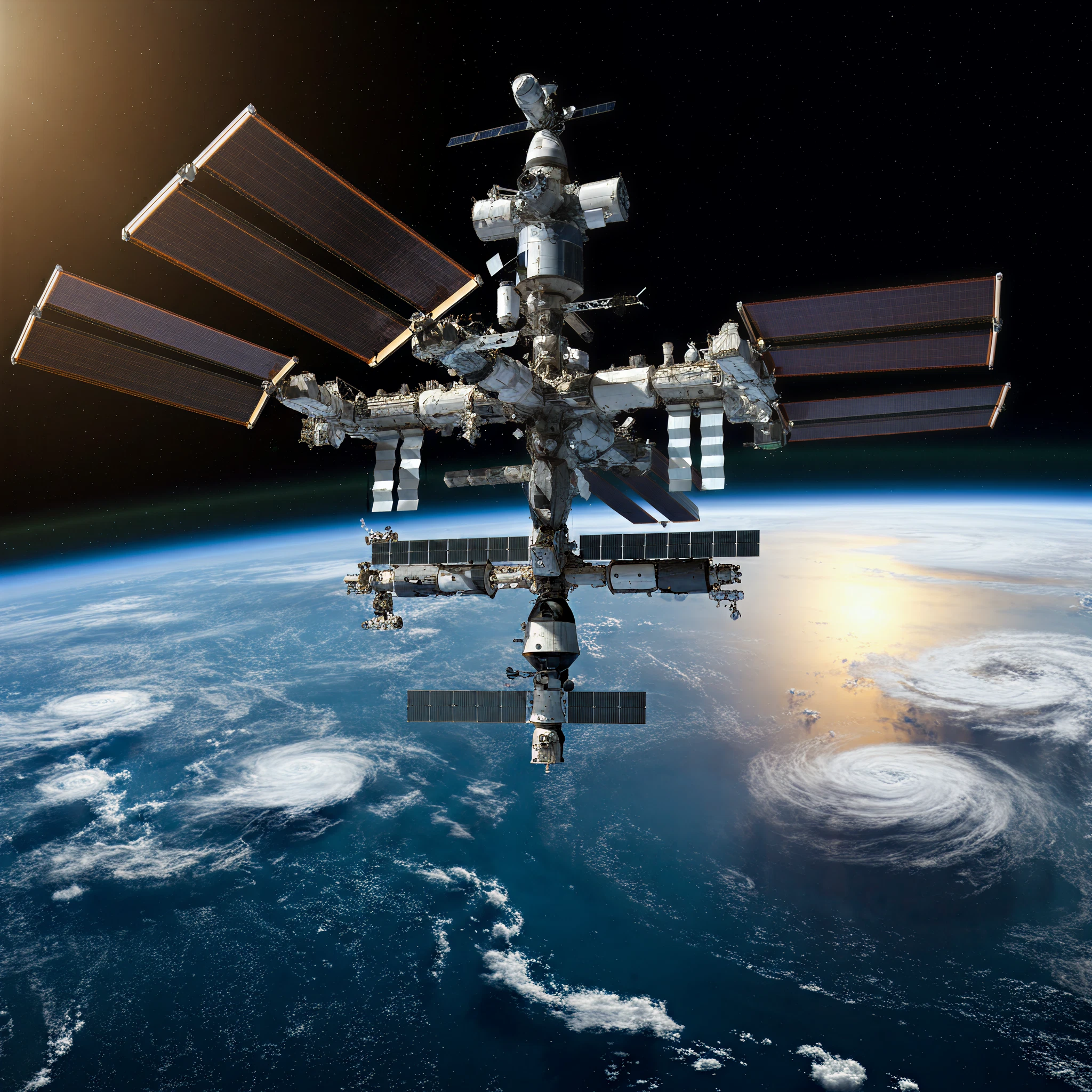The International Space Station (ISS), a living symbol of human collaboration and scientific progress, has captivated the world since its inception. From its construction to its role as a hub for cutting-edge research, the ISS station remains a marvel of modern engineering and exploration. Let’s explore its history, purpose, daily life aboard, and its promising future.
A Vision of Collaboration
The ISS station is not owned by one nation; it is a shared project involving 15 countries, including the United States, Russia, Japan, Canada, and members of the European Space Agency. Operational since 1998, this orbital laboratory orbits Earth at approximately 400 kilometers (250 miles), traveling at a speed of 7.66 km/s (about 17,150 mph). Its primary mission is to advance humanity’s understanding of space, benefiting life on Earth and paving the path for future missions to the Moon and Mars.
Key Technological Features
The ISS station is a technological masterpiece. Its modular design consists of interconnected laboratories, living quarters, solar panels, and docking ports. Some of its key features include:
- Solar Arrays: Harnessing sunlight to generate power, meeting almost all of the station’s energy needs.
- Robotic Arms (e.g., Canadarm2): Helping astronauts move equipment and perform repairs outside the station.
- Life-Support Systems: Recycling air, water, and even urine to sustain astronauts for extended periods.
- Cutting-Edge Laboratories: Modules like Destiny and Kibo allow for advanced research in microgravity, spanning biology, physics, and material sciences.
Scientific Research and Its Impact
The ISS station serves as a hub for extraordinary research. It enables experiments that would be impossible under Earth’s gravitational pull, such as:
- Medical Advances: Research on diseases like cancer and osteoporosis has flourished. For example, microgravity aids in studying cell behavior and drug development.
- Technology Testing: The station tests devices like 3D printers and autonomous robotics, preparing them for future space missions.
- Earth Observation: Monitoring climate change, natural disasters, and weather patterns from orbit provides invaluable data for scientists and governments.
Life Aboard the ISS Station
Imagine your home zooming around Earth 16 times a day! This is a reality for astronauts who live and work aboard the ISS station. Here’s a glimpse into their daily routines:
- Schedule:
- Astronauts work 10-hour days and spend time conducting experiments, exercising, and maintaining the station.
- Every moment is meticulously planned by mission control teams across the globe.
- Meals:
- Food aboard the ISS is carefully packaged and includes options like freeze-dried fruits, vacuum-sealed beef, and even tortilla wraps (less crumbly than bread in zero gravity!).
- Astronauts often share meals, fostering a strong sense of community.
- Exercise:
- Maintaining muscle and bone density is a top priority. Treadmills, cycling machines, and resistance bands make up their fitness routines.
- Leisure:
- Crew members enjoy stunning views of Earth through the iconic Cupola window, communicate with their families, and indulge in books or movies during free time.
A Brief History of Milestones
The ISS station represents decades of perseverance and progress:
- 1993: Agreement signed between NASA and Russia to collaborate on the ISS.
- 1998: The first component, Zarya, launched into orbit.
- 2000: The ISS welcomed its first resident crew.
- 2011: The final construction phase completed, marking the station as fully operational.
- Present: The ISS has hosted over 250 astronauts and supported more than 3,000 experiments.
The Future of the ISS Station
As the ISS approaches its planned end of operations in 2030, discussions are underway about its successors:
- Commercial Partnerships:
- Private companies like SpaceX and Blue Origin are developing space stations for research and tourism.
- Deep Space Exploration:
- Data and technologies from the ISS station will inform upcoming missions, including NASA’s Artemis Program to the Moon and Mars.
- Space Sustainability:
- Plans to repurpose or safely deorbit the ISS after its retirement are being discussed to minimize space debris.








